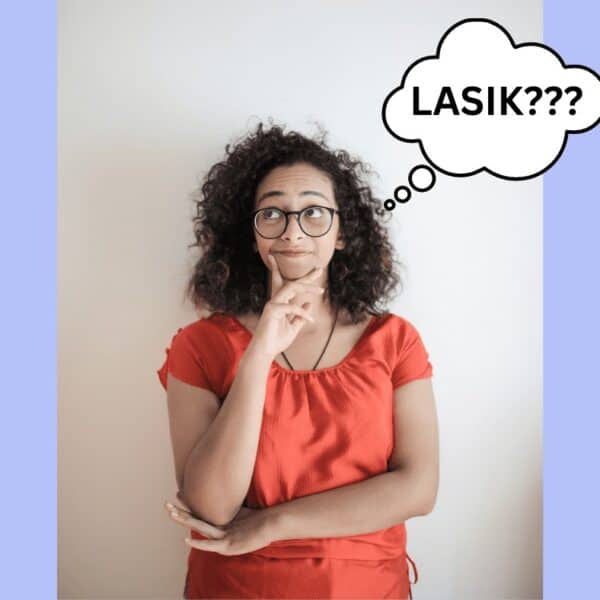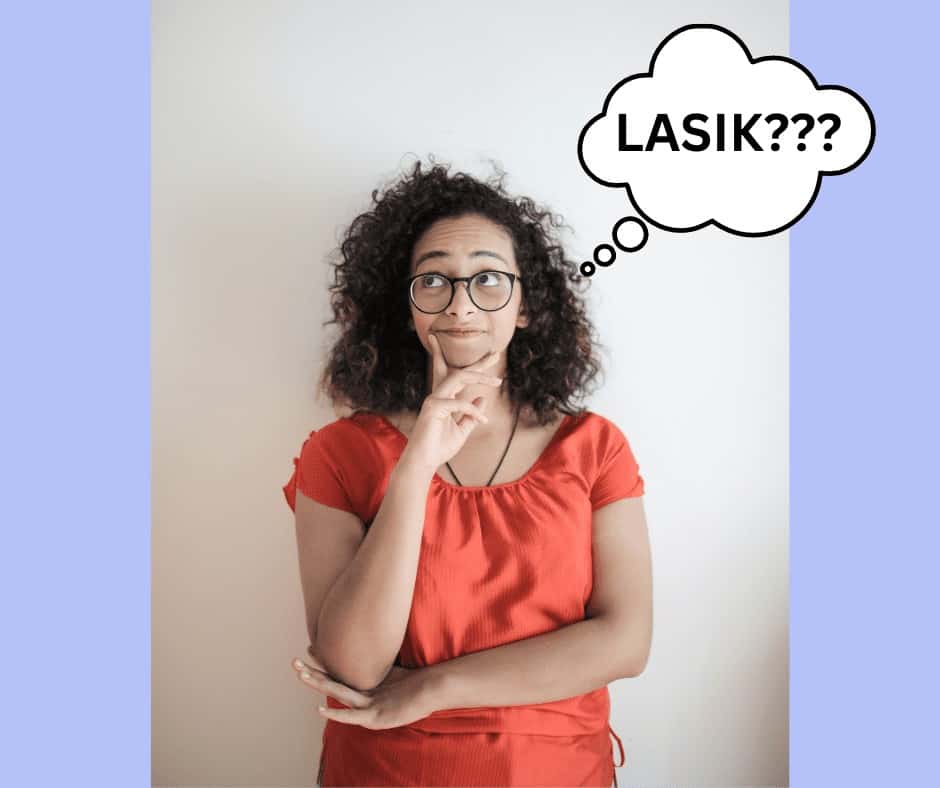
Am I a Candidate for LASIK?
February 24, 2023

It seems like we are having the “LASIK talk” with a lot of patients recently, so here is some valuable information to help you determine if LASIK might be for you!

LASIK Acronym
LASIK stands for Laser-Assisted In Situ Keratomileusis, which is the medical terminology that literally means “carving the cornea in its normal position with the help of a laser.” Using a specialized laser, the cornea can be flattened and reshaped to correct abnormalities that are involved with myopia (nearsightedness) and astigmatism. This type of refractive surgery provides clear vision without the need for glasses or contact lenses for distance vision. Most people immediately see a dramatic improvement of vision, which continues as the eyes heal.
It is very important to understand that LASIK only corrects distance vision. This means if you are over 40 years old, you may likely still need reading glasses within the next few years. Most nearsighted people have the benefit of seeing up close without any glasses. However, after LASIK surgery, a nearsighted person will no longer have this advantage if experiencing presbyopia.
LASIK Candidates
The first step in determining if a person is a good candidate for LASIK surgery is to perform a comprehensive eye exam. The severity of refractive error, or glasses prescription, is a good indicator of whether LASIK is even a feasible option. Then, the eyes are examined for underlying dry eye syndrome, which should be treated prior to surgery since the procedure can worsen dryness, and other ocular health conditions.
Additional corneal measurements are also necessary to make sure the cornea is thick enough for LASIK and to rule out any conditions, such as keratoconus. This is accomplished with a corneal topographer, which is a digital machine that plots a topography, or map, of the cornea to identify any irregularities. Contact lens wear can temporarily change the shape of the cornea and lead to inaccurate measurements during corneal topography. Therefore, contact lenses must not be worn for a minimum of 2 weeks prior to having a LASIK consultation. This allows the cornea to return to its normal shape before the corneal topography is completed.
Not everyone is a good candidate for LASIK. There are other refractive surgery options available, such as PRK and phakic intraocular lens implants. If you wear glasses and haven’t tried contact lenses, it may be worth a try too!
LASIK Procedure
A microkeratome or a femtosecond laser is used to make a thin flap of corneal tissue. A microkeratome uses a blade to make the flap, whereas a femtosecond laser uses the energy of the laser to create a flap without the use of a blade. The flap is folded back to expose the deeper layers of the cornea, which are flattened with an excimer laser to correct the vision. Once the corneal reshaping is completed, the flap is replaced to cover the treated portion of the cornea. Sutures are not required because the flap is thin enough to automatically seal back to the rest of the cornea. The eyes are very numb from topical anesthetic drops, which makes this a relatively pain-free procedure.
LASIK Healing Process
There will likely be some haziness at first, but overall vision should appear better immediately after surgery. Vision usually stabilizes over the next several days as the eyes continue to heal, however, it may take months to achieve optimal distance vision. Some people experience mild irritation or dryness after surgery. The LASIK surgeon will prescribe medicated eye drops to minimize the risk of infection and inflammation. Preservative-free artificial tears are another necessary part of the eye drop regimen to assist in the healing process and long-term outcome.
During the first 24 hours after surgery, it is best to rest the eyes and avoid prolonged screen time. A list of restrictions or limitations will be provided for the following days and weeks after surgery. The flap can dislodge and shift out of position by rubbing the eyes, so it is important to be very conscientious about not touching the eyes and avoiding environments that are dirty or dusty.
Follow-up care is essential in making sure the flap has not moved, checking for signs of infection or inflammation, and monitoring the improvement in vision. There should be about six follow-up appointments after LASIK surgery. The first follow-up is typically after 1 day, then 1 week, 1 month, 3 months, 6 months, and 1 year after surgery. If the final outcome has room for improvement, a very small percentage of people may receive an enhancement or touch-up procedure.
Wondering if you’re a “good candidate” for LASIK surgery? Call our office (717-652-7710) or schedule an appointment online to find out!